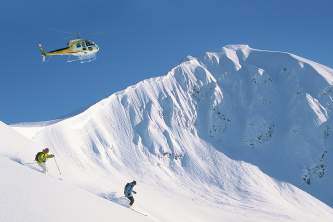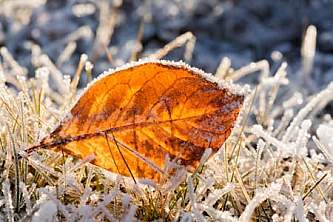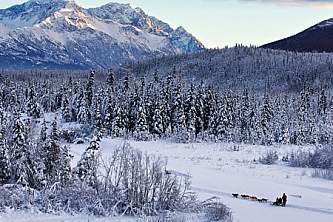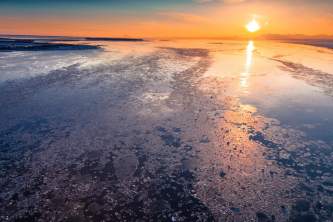What to Wear in Alaska in Winter
Alaskans have a proverb: There’s no such thing as cold weather—only cold clothing! So don’t be afraid of chilly or even frigid temperatures. It’s easy for anyone to stay warm and dry during a winter trip to Alaska. Just follow these five rules and use our packing list.
Rule #1: Layer!
Inner Layer
Wear a light- to mid-weight wool or synthetic base layer that fits snugly to your body. Absolutely no cotton! Some good buys are long underwear from SmartWool, Capilene 3 or 4 from Patagonia, or Under Armour ColdGear. Warehouse stores like Costco often offer these items for bargain prices. Wear a top and a bottom.
A tip to guys: In windy or subzero conditions, consider wearing briefs or boxers reinforced with material that blocks the wind over the privates. Or use a hat!
Insulating Layer
Wearing several layers is the best way to trap heat close to your body. Two (or more) thinner layers will be much warmer than a single heavier layer of similar bulk. Just be prepared to adjust the number of insulating layers to match the outside temperature and conditions with your activity level.
- How to layer. In general, each insulating layer should be a little looser and heavier than the one beneath. If you're wearing lightweight inner bottom layers, the next layer should include mid-weight fleece or Capilene. A fleece or pile jacket on top is a great final touch. Packable down- or synthetic-filled sweater jackets also work well. Many Alaskans will like to wear a down or fleece vest to help warm the body core while leaving arms less encumbered. For extremely frigid days, fleece pants or heavy long underwear bottoms can be handy.
- Don't get too hot. The biggest threat to Alaska winter comfort during activities might not be shivering with chattering teeth. It’s overheating! If you find yourself wearing too many layers for conditions, you tend to grow hot and then start to perspire. Once clothing gets damp, it loses warmth, making you uncomfortable and chilly once you stop moving around.
- Stay dry! This is essential. If you're skiing, hiking, or otherwise active, dress so that you’re a little bit cold when standing around at the trailhead. Then adjust as you go, peeling off an insulating layer or two, then putting it back on once you stop. Carrying a backpack or satchel can be helpful for stowing these unused layers while underway.
Outer Layer
A nylon jacket or ski parka that fits over your insulating layers will cut the wind and trap heat. Many Alaskans also wear windproof or waterproof ski pants—full-zip models are especially easy because you can put them on without taking off your boots. Downhill ski pants often feature additional insulation that will add significantly to the warmth of your inner layers.
Insulated winter skirts are a new popular outer layer among Alaskan women. Most feature a side zipper that allows you to wrap them around your waist and put them on over outdoor clothing. Check out Skhoop, Arctix, Ortovox, Mountain Hardwear, and REI.
For your final, ultimate outer layer, nothing beats a down or synthetic down parka, especially for spectating at outdoor events like a race or festival. In temperatures below 10 degrees, particularly if there’s wind, you’ll be glad to have this as an option.
Rule #2: Keep Your Feet Warm
Warm feet are a must—they can make or break your day. Purchasing boots rated at -20 to -40 is a good idea. If you already have a pair of boots but are concerned they won’t be warm enough, toe warmers can usually make up the difference. Avoid the brand Little Hotties—they don’t work well in cold temperatures! Instead, try Grabbers. They have an adhesive that sticks to the outside of your socks to keep them in place—and they last for 6+ hours.
A note about socks: Using wool or synthetic winter socks, preferably two pairs (a thinner liner combined with a thicker pair) will help keep your feet warm and dry inside those boots. Do not use cotton socks! They will make your feet cold.
Rule #3: Choose Mittens Over Gloves
Warm fingers are as important as warm toes. Mittens are the best choice because they keep your fingers together and trap heat more effectively than gloves. Hand warmers (also made by Grabber) are good to have on hand if you need some extra heat. If you’re taking photos and need to use your fingers, wear a thin pair of gloves beneath your mittens so that when you take the mitten off, your fingers aren’t totally exposed.
Rule #4: Keep Your Head Warm
A great combination in cold temperatures is a hat paired with a balaclava that will cover your nose and cheeks. If you’re active and become warm, swap the hat for a headband—but keep those ears covered to avoid frostbite! An inexpensive nylon buff around the neck and/or pulled up over your head and ears can be as effective as pulling on an extra coat.
Rule #5: Keep Snow Out of Your Boots
If you anticipate wading in deep snow and don’t want it to get into your boots, consider purchasing some inexpensive gaiters. They’re worn over your boot, cover up to your mid-calf or knee, and are held in place with a drawstring at the top and a strap underneath the boot. A warm boot is rendered totally useless if the inside gets wet.
Packing List
- Lightweight wool or synthetic long underwear top
- Lightweight wool or synthetic long underwear bottom
- Wind briefs (for men doing outdoor sports)
- Medium weight wool or synthetic long underwear top. Looser or one size larger than the first layer
- Medium-weight wool or synthetic long underwear bottom. Looser or one size larger than first layer
- Fleece or down vest
- Fleece jacket or heavyweight top that fits over inner layers
- Fleece or heavy bottoms (for especially frigid spectating)
- Wind or snow pants that fit over bottom layers
- Wind or ski jacket that fits over top layers
- Down or synthetic down winter parka (with hood if possible)
- Insulated winter skirt
- Good winter boots
- Synthetic liner socks (no cotton!)
- Warm synthetic or wool insulating socks
- Mittens
- Liner gloves that fit inside your mittens (especially for photographers)
- Hat that covers your ears
- Balaclava or buff (or both!)
- Headband
- Snow gaiters
Should You Buy or Rent Winter Clothing?
You can purchase high-quality clothing and gear from 6th Avenue Outfitters in Anchorage, and also at Big Ray's, which has locations in Anchorage, Fairbanks, and Kodiak. If you only need to use the clothing in Alaska, consider renting. Alaska Outdoor Gear Outfitter & Rentals can prepare a custom gear package for your winter visit.





